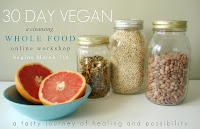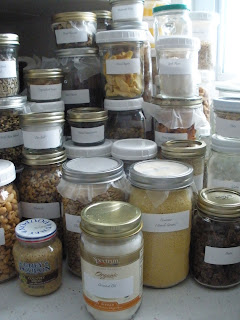This week – during the break between the thunderstorms, heavy rain, and hail plus a tornado less than 10 minutes from here – we were able to do the Outdoor Hour Challenge Spring Series #4: Wildflowers-Dandelions.
Throughout this post, three different typefaces are used:
– Bold – are words from the Handbook of Nature Study website.
– Italics – are words from the book titled Handbook of Nature Study by Anna Botsford Comstock.
– Regular – are my own words.
Before heading outside, I read pages 531-535 in the Handbook of Nature Study about dandelions. In this way, I could point out different things about dandelions as the girls were looking at them.
Here are some facts from the book that I found interesting:
– The taproot, which lacked only an inch of being a foot in length. It was smooth, whitish, and fleshy, and, when cut, bled a milky juice; it was as strong from the endpull as a whipcord; it also had a bunch of rather fine rootlets about an inch below the surface of the soil.
– Dandelion leaves [have] edges [that] are notched in a peculiar way, so that the lobes were, by some one, supposed to look like lions’ teeth in profile; thus the plant was called in France “dents-de-lion” (teeth of the lion), and we have made from this the name dandelion.
Dandelion leaves…or
as the plant was known in France:
“Dents-de-lion” (teeth of the lion)
– The leaves are bitter, and grazing animals do not like to eat them.
– The hollow stalk…may be made into a trombone [by children]. [This is a good] lesson in the physics of sound, since by varying the length the pitch is varied.
– If the plant is in the lawn, the stem is short….It will blossom and seed within two inches of the ground; but if the plant is in a meadow or in other high grass, the stalk lifts up sometimes two feet or more.
Dandelion stems can grow to be up to two feet tall.
This one was over one foot tall.
– Before a dandelion head opens, the stem, unless very short, is likely to bend down, but the night before it is to bloom it straightens up; after the blossoms have matured it may again bend over, but straightens up when the seeds are to be cast off.
– It often requires an hour for a dandelion head to open in the morning and it rarely stays open longer than five or six hours; it may require another hour to close.
Unopened dandelion in the morning.
The involucral bracts can easily be seen covering the flowers as well as
near the stem where they make a frill.
– The involucral bracts, in the row set next to the flowers, are sufficiently long to cover the unopened flowers; the bracts near the stem are shorter and curl back, making a frill.
– In the freshly opened flower-head, the buds at the middle all curve slightly toward the center, each bud showing a blunt, five-lobed tip which looks like the tips of five fingers held tightly together.
Dandelion in the process of opening.
– All the flowers in the dandelion head have banners, but those at the center…have shorter and darker yellow corollas.
Fully-opened dandelion.
– On dark, rainy days and during the night the little green house puts up its shutters around the flower family.
– [Dandelions] awaken long after the sun is up in the morning; they often do not open until eight o’clock.
– After all the florets of a dandelion head have blossomed, they may stay in retirement for several days, and during this period the flowerstalk often grows industriously; and when the shutters of the little green house are again let down, what a different appearance has the dandelion head! The akenes with their balloons are set so as to make an exquisite, filmy globe.
Dandelion akenes make a silver globe.
– The balloon is attached to the top of the beak as an umbrella frame is attached to the handle, except that the “ribs” are many and fluffy.
Four akenes on my shoe.
– This blossom-bald head after all the akenes are gone…is like a mosaic, with a pit at the center of each figure where the akene was attached.
Dandelion head minus the akenes.
Notice the mosaic pattern.
– Before the akenes are fully out this soon-to-be-bald head is concave at the center; later it becomes convex, and the mechanism of this movement liberates the akenes which are embedded in it.
Akenes ready to fly off.
– Each freshly opened corolla-tube is full to overflowing with nectar, and much pollen is developed; therefore the dandelion has many kinds of insect visitors.
– The following are the tactics by which the dandelion conquers us and takes possession of our lands:
~~> It blossoms early in the spring and until snow falls, producing seed for a long time
~~> It…fourishes on all sorts of soils.
~~> It thrusts its long taproots down into the soil, and thus gets moisture and food not reached by other plants.
~~> Its leaves spread out from thebase, and crowd and shade many neighboring plants out of existence.
~~> It develops almost numberless akenes, and the wind scatters them far and wide and they thus take possession of new territory.
~~> Many insects visit it, and so it has plenty of pollen carriers to insure strong seeds.
Hand covered in pollen from picking dandelions.
Outdoor Hour Time:
Spend 15 minutes outdoors this week in your own backyard or a near-by park. As you walk along, keep your eyes out for dandelions.
Suggestions for Observations
See if you can find several dandelions in various stages of growth.
This was easy to do since we have so many dandelions growing in the yard. During the mid-day we observed various stages of growth. In the late-afternoon, we could see the dandelions in various stages of opening-to-closing.
Dandelions in various stages of growth.
Look at the leaves and collect a few for sketching later in your nature journal.
We will be doing an entry in our nature journals this week.
If it is growing in your own yard, you might like to dig up the complete dandelion plant and observe the roots.
Didn’t have a chance to do this, but will do at a later date.
Measure the height of several different dandelion plants and compare them.
This was something that the girls enjoyed. Their idea was to do a race to find the longest stem.
Running to get dandelions and
bring them back to measure.
For the first round, Olivia found one with a 6″ stem and Sophia’s was 5 1/2″. The second round, Sophia found one with an 11 1/2″ stem and Olivia found one with a 10″ stem.
Olivia measuring a dandelion stem with
Montague standing behind her.
As noted above, dandelions can grow to be over two feet tall. The girls wanted to see how tall this would be, so they put two rulers together.
Imagine a dandelion growing this tall!
Some of them do in meadows or where there is high grass.
Examine an unopened dandelion flower.
Sophia opening an unopened dandelion.
Watch a bee working in a dandelion.
We did not see any bees visiting the dandelions while we were outside.
Observe the seeds and how they are dispersed.
See pictures at the top of the post for the akenes on the dandelion as well as stuck to my shoe. The girls both could see how they resembled umbrellas. They also are similar to spiderlings in that they use the wind to find a new location in which to grow.
Observe your dandelions on a sunny day and then on a cloudy day. Note any differences.
We will do this over the weekend since another round of storms are forecasted to arrive on Friday.
Follow-Up Activities:
Take some time to draw the dandelion in your nature journal. Make sure to record your observations of the dandelion and make a sketch of the leaf and flower.
We ran out of time the afternoon when we did the study, so the girls still will need to do a journal page.
*~*~*~*~*~*~*~*~*~*~*
Other activities that we did:
We made Dandelion Flower Cookies. The recipe is from The Splendid Table (on National Public Radio). Note: Before making the cookies, read Dr. Peter Gail’s instructions for cooking with dandelion flowers (below the recipe).
The cookies are moist and taste have a pleasant, though not strong flavor. The strongest flavor came from the vanilla, not from the dandelions. The tiny yellow petals make the cookies pretty and unusual…certainly something that children will remember…hopefully in a good way.
Dandelion Flower Cookies
1/2 cup oil
1/2 cup honey
2 eggs
1 teaspoon vanilla
1 cup unbleached flour
1 cup dry oatmeal
1/2 cup dandelion flowers
Preheat oven to 375°F. Blend oil and honey and beat in the two eggs and vanilla. Stir in flour, oatmeal and dandelion flowers. Drop the batter by teaspoonfuls onto a lightly oiled cookie sheet and bake for 10-15 minutes.
Cooking with Dandelion Flowers
by Peter A. Gail, Ph.D
Dandelion flowers aren’t just pretty. They are also extremely nutritious food and have none of the bitterness of dandelion leaves if you cut off the green bracts at the base of the flower cluster.
To Prepare Dandelion Flowers for Use in Recipes:
- Wash them thoroughly.
- Measure the required quantity of intact flowers into a measuring cup.
- Hold flowers by the tip with the fingers of one hand and pinch the green flower base very hard with the other, releasing the yellow florets from their attachment. Shake the yellow flowers into a bowl. Flowers are now ready to be incorporated into recipes.
Dandelion Cookies.
*~*~*~*~*~*~*~*~*~*~*
I found a few more uses for dandelions which we started to work on: dandelion vinegar and dandelion-infused oil (which also can be made into a salve).
The first step for both the vinegar and oil/salve is to collect the blossoms. Make sure they are from an area that isn’t sprayed with chemicals. These dandelions came from our yard which is not sprayed.
Sophia collecting dandelion blossoms.
Fill a quart jar with blossoms.
Olivia filling a jar with dandelion blossoms.
For the dandelion vinegar, cover with apple cider vinegar and then put a cover on the jar.
Sophia pouring apple cider vinegar over
dandelion blossoms.
Place in a sunny location to steep. Shake well every day. After two weeks, strain with a cheesecloth. The dandelion vinegar should be stored in the refrigerator and used on salads.
For the dandelion-infused oil, pour oil (olive, almond, or canola) over the blossoms until they are fully covered. Poke around with a wooden spoon handle to make sure there are no air bubbles. Cover with a coffee filter held on by a rubber band (or a lid if you’re concerned about the jar being tipped over for some reason).
Olivia pouring oil over dandelion blossoms.
Place in a sunny location to steep for two weeks. Stir the mixture once a day.
Dandelion vinegar (left) and dandelion-infused oil (right)
steeping in the sun.
After one week, strain the mixture, throw out the brown dandelions, and add fresh ones. Cover with the coffee filter/lid and return to a sunny location for another week of steeping. After two weeks, strain using a cheesecloth.
We haven’t gotten this far yet, but to make the dandelion salve, make the dandelion-infused oil first. Then add grated beeswax to the oil and melt it. Add enough to reach your desired consistency. To test the consistency, drip a drop of the mixture onto a plate. It will cool immediately and you can see if it is thick enough.
Dandelions have pain-relieving properties, so the oil and salve can be used for sore muscles or arthritis. Just apply to the affected area. It can also be used to relieve sinus headaches by rubbing a little on your forehead. The salve and oil can be used for dry skin as well.
As soon as the dandelion vinegar, oil, and salve are done, I’ll post pictures.
*~*~*~*~*~*~*~*~*~*~*
There are two more recipes that we want to make, but didn’t have enough time today: dandelion jelly and dandelion fritters. We’ll be making these items this week since there seems to be no shortage of dandelions in the yard.
*~*~*~*~*~*~*~*~*~*~*
The last thing we did as part of today’s study on dandelions was focused on storytelling and poetry. I read to the girls the story about how you can’t pick a dandelion. It’s a lovely story and gives a very different view of what a dandelion is…as is anything in nature.
Then I read a poem about dandelions that came from a Waldorf website:
O DANDELION
O Dandelion, yellow as gold, what do you do all day?
“I just wait here in the tall, green grass, ’till the children come to play.”
O Dandelion, yellow as gold, what do you do all night?
“I wait and wait, while the cool dew falls, and my hair grows long and white.”
And what do you do when your hair grows white, and the children come to play?
“They take me in their dimpled hands, and blow my hair away!”
Read Full Post »































































